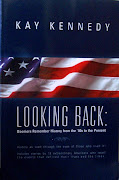Since the integration crisis at Little Rock Central High has been in the news so much recently, I decided to cover that era today. I was there that September morning 50 years ago. I was one of the 2000 or so white students who suddenly had our world turned upside down by a decision to make our school an “example” in the South. We weren’t asked our opinion, because we were just kids. But we were forced to face the grown-up horrors of racist protesters and constant bomb threats against our school, no matter that we were kids.
The decade of the ‘50s and the integration crisis is covered thoroughly in my book, Looking Back, but I’ll attempt to help blog readers understand what it was like to be the center of media attention when, as students, all we wanted to do was enjoy our high school days like every other high school kid in America.
First of all, I knew in my heart that the Brown vs. Board of Education Supreme Court Ruling was right in trying to equalize education for white and black students. And we all realized it would happen sometime, but I guess we hoped it would happen first somewhere else. Perhaps a grade school, or a school in a smaller town that would lack facilities for protestors and the media to gather. Just somewhere else besides our school. We weren’t prepared for it. And we weren’t offered a choice.
That first day, the governor decided to call in the National Guard to keep order, but instead they showed up to keep the black students from entering the school. That was the first mistake in a long list of political maneuvers that created a bully pulpit for the extremists on both sides of the argument. It only grew worse from that point on.
The media made a nuisance of itself trying to find stories that didn’t exist, and probably was most responsible for stirring up unrest among protestors, most of them adults and many of them not even from the State of Arkansas. They were mostly the same troublemakers who always stand ready to demonstrate their ignorance, shouting out their opinions in hopes of getting their 15 minutes of fame on television screens or in the newspaper. That’s what drove news coverage during those turbulent days, and still does today.
I can’t say the black students didn’t suffer discrimination when they finally were admitted into school with the backing of the 101st Airborne Division of the U.S. Army. There may have been shoves and insults hurled their way. But I can honestly say that I never saw any acts of violence, and I don’t know how they could have been threatened or harmed when they were each surrounded by guards every time I saw them. Still, I can understand deep emotional wounds from not feeling welcome.
I do admit that most of us didn’t talk with them or make them feel welcome, but it had nothing to do with intolerance or racism. It had everything to do with our being afraid of violence against ourselves if we so much as smiled at them or spoke to them. Who might see us and seek retaliation? Fear motivated most of us to simply ignore them as if they didn't exist.
And it wasn't some sort of conspiracy to ignore them. You see, we kids didn’t discuss the situation back then. We had been taught to be respectful, to obey the rules and to keep our feelings to ourselves. So we didn’t know who was racist and who wasn’t, or even if there were racists among the students. Statistics tell me that it’s likely there were, but there was no way of knowing back then. And yes, we had armed guards standing every few feet down the hall, but that didn’t make us white students feel any safer. Instead, their rifles and bayonets terrified most of us. We went about the business of getting our education, hoping we would wake up one morning and find the problems had all gone away.
I’ll continue this story in my next post here.
Subscribe to:
Post Comments (Atom)


No comments:
Post a Comment